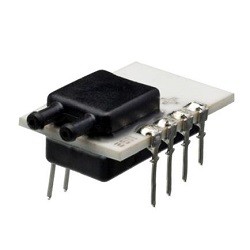How do sensors play a role in the IoT business?
Distinct species of applications claim various sorts of sensors to collect data from the environment. This article takes a look at some standard IoT sensors.
In an IoT ecosystem, two elements are essential: the Internet and physical devices like sensors and actuators. As shown in Fig. 1, the bottom panel of the IoT system consists of sensor connectivity and a network to gather information. This layer is a vital part of the IoT system and has network connectivity to the next gateway and network.

The principal idea of sensors is to gather data from the surrounding environment. Sensors, or ‘things’ of the IoT system, form the front end. These are united directly or indirectly to IoT networks after signal conversion and processing. But all sensors are not equivalent, and different IoT applications require different types of sensors. For instance, digital sensors are straightforward and easy to interface with a microcontroller using a Serial Peripheral Interface (SPI) bus. But for analog sensors, either an analog-to-digital converter (ADC) or Sigma-Delta modulator is used to convert the data into SPI output.
Standard Type of Sensors
Temperature sensors

Sensor devices measure the amount of heat energy produced from an object or surrounding area. It uses in air conditioners, refrigerators, and similar appliances used for environmental control. They operate in manufacturing processes, agriculture, and the health industry.
Temperature sensors can be practiced almost in each IoT environment, from manufacturing to agriculture. In production, sensors monitor the heat of machines. In agriculture, these can use to observe the temperature of the soil, water, and plants.
Temperature sensors involve thermistors, thermocouples, resistor temperature detectors (RTDs), and integrated circuits (ICs). Some common types of temperature sensors.
Humidity sensors

Water vapor in the air, or humidity, can influence human comfort and numerous production processes in industries. So monitoring liquidity level is essential. The most commonly used units for humidity analysis are relative humidity (RH), dew/frost point (D/F PT), and parts per million (PPM).
Motion sensors

Motion sensors are used for security purposes and in energy management systems, automated parking systems, hand dryers, automated toiler flushers, automated sinks, and automated door controls. You can use these sensors in IoT and Monitoring from your web dashboard or smartphone.
Gas sensor

Gas sensors use to recognize toxic gases. The sensing technologies use in semiconductors, photo-ionization, and electrochemical. With scientific progress and new specs, various gas sensors extend the wired and wireless connectivity deployed in IoT applications.
Smoke sensor

Smoke detectors have been in use in industries and homes for quite a long time. With the arrival of the IoT, their applicability has become more comfortable and user-friendly. Moreover, adding a wireless connection to smoke detectors permits additional features that enhance security and support.
Pressure sensor

These sensors are utilized in IoT systems to watch systems and tools that drive by pressure signals. When the pressure scale surpasses the threshold level, the device informs the user about the fixable obstacles. Industrial pressure sensors are suitable for compressors, manufacturing, automation, hydraulics, utilities, Agriculture, HVAC.
Proximity sensors

Sensors recognize the appearance or lack of a nearby object without any substantial contact. Various proximity sensors are Ultrasonic, inductive, capacitive, photoelectric, and magnetic. These sensors use in the monitoring process and control object counters.

